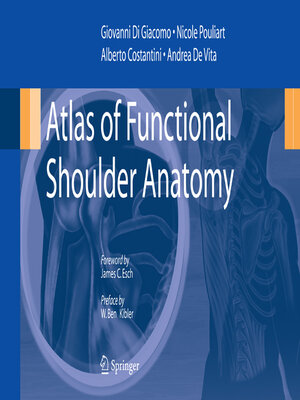
Sign up to save your library
With an OverDrive account, you can save your favorite libraries for at-a-glance information about availability. Find out more about OverDrive accounts.
Find this title in Libby, the library reading app by OverDrive.



Search for a digital library with this title
Title found at these libraries:
| Library Name | Distance |
|---|---|
| Loading... |
The anatomy of the shoulder is based on complex joint biomechanics, which guarantee the coexistence of both maximum mobility and stability within the same joint. In recent years, diagnostic techniques such as magnetic resonance and arthroscopy have made it possible to study and better interpret those fine anatomical structures which were formerly very difficult to appreciate through "open surgery" dissection techniques that would compromise their integrity.
Difficulties of technical nature, which today have been overcome thanks to technology, delayed the use of endoscopy in shoulder treatment thus filling the gap previously existing if compared with other joints surgery (i.e., knee). Shoulder arthroscopy, exploiting anatomical integrity, has contributed with excellent results to the identification of those structures that have been given little descriptive importance in classical texts.
The purpose of this Atlas is to focus the reader's attention on a series of bone, ligament, muscle and tendon structures and ultrastructures on which only the most recent international literature has reported in specialized journals. This Atlas also presents extremely high-definition images of "targeted" sections obtained from cadavers preserved using state-of-art techniques.
This unique Atlas, making use of images of major visual impact, offers a scientific message on a topical joint, using simple but dedicated descriptive language.
Among the various aims of this volume, the authors intend to present the shoulder anatomy in a new and original way and want to help the reader to understand the complexity of scientific research, highlightening the importance of the integration of anatomical, biomechanical, and neurophysiological knowledge.
The text is intended to complete the most recent and current anatomical studies of scientific research, enhancing those minimal structures to which a precise and clear mechanical andneurological role is now being attributed.







